The National Hockey League (NHL), with its rich history and ever-evolving dynamics, showcases a fascinating range of players, from seasoned veterans to youthful newcomers. Analyzing the oldest and youngest players in the league offers a unique perspective on the game’s generational talents and the diverse age spectrum represented. This exploration not only highlights the careers and impacts of these players but also provides insights into how longevity and youthful exuberance influence team dynamics and the sport itself.
Here are the Top 10 Oldest and Youngest Players
Oldest Players in the NHL
1. Zdeno Chara
Zdeno Chara, born on March 18, 1977, in Trencin, Slovakia, is one of the most imposing figures in NHL history, both in stature and impact. Standing at an impressive 6 feet 9 inches, Chara is the tallest player ever to play in the NHL. His career spans over two decades, during which he has been a dominant defensive force.
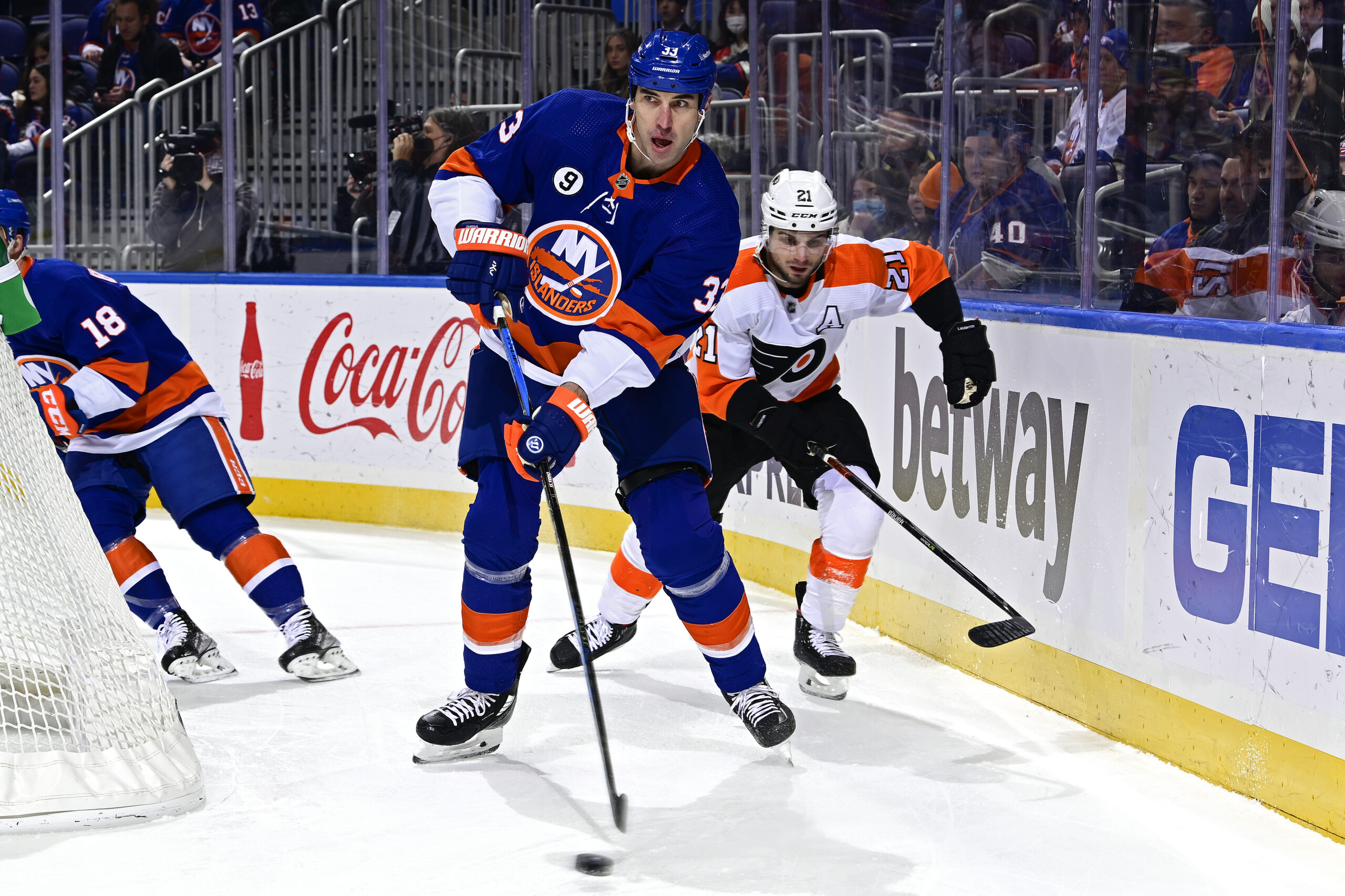
Chara was drafted by the New York Islanders in the third round of the 1996 NHL Entry Draft. He developed his game over the years, moving from the Islanders to the Ottawa Senators, and finally finding a long-term home with the Boston Bruins, where he became the captain in 2006. Under his leadership, the Bruins won the Stanley Cup in 2011, and Chara won the Norris Trophy as the league’s top defenseman in 2009.
His physicality and defensive prowess characterize Chara’s playing style. He is known for his powerful slap shot, which once clocked at 108.8 mph, one of the hardest in NHL history. Off the ice, Chara is known for his rigorous fitness regimen, which many believe has contributed to his longevity in the league. Despite his age, Chara continues to be an effective player, using his reach and experience to his advantage, playing key roles in penalty-killing and defensive matchups.
Zdeno Chara’s influence on the game extends beyond his physical attributes. Over his illustrious career, Chara has become known for his leadership and sportsmanship, characteristics that have earned him the Mark Messier NHL Leadership Award. He has been a key figure in promoting fitness and wellness, often sharing his vegan diet and his unique training routines that have helped him maintain peak physical condition well into his 40s.
Chara’s tenure with the Boston Bruins solidified his reputation as one of the league’s best defensemen. His defensive skills are complemented by his ability to contribute offensively, notably during power plays with his formidable slap shot. Chara’s legacy includes mentoring younger players and emphasizing the importance of discipline, hard work, and respect for the game.
2. Jaromir Jagr
Jaromir Jagr, born on February 15, 1972, in Kladno, Czechoslovakia, is one of the most prolific and enduring players in the history of the NHL. His career in the league began in 1990 when he was drafted by the Pittsburgh Penguins. Over the years, Jagr has played for several teams, including the New York Rangers, Philadelphia Flyers, and New Jersey Devils, among others.
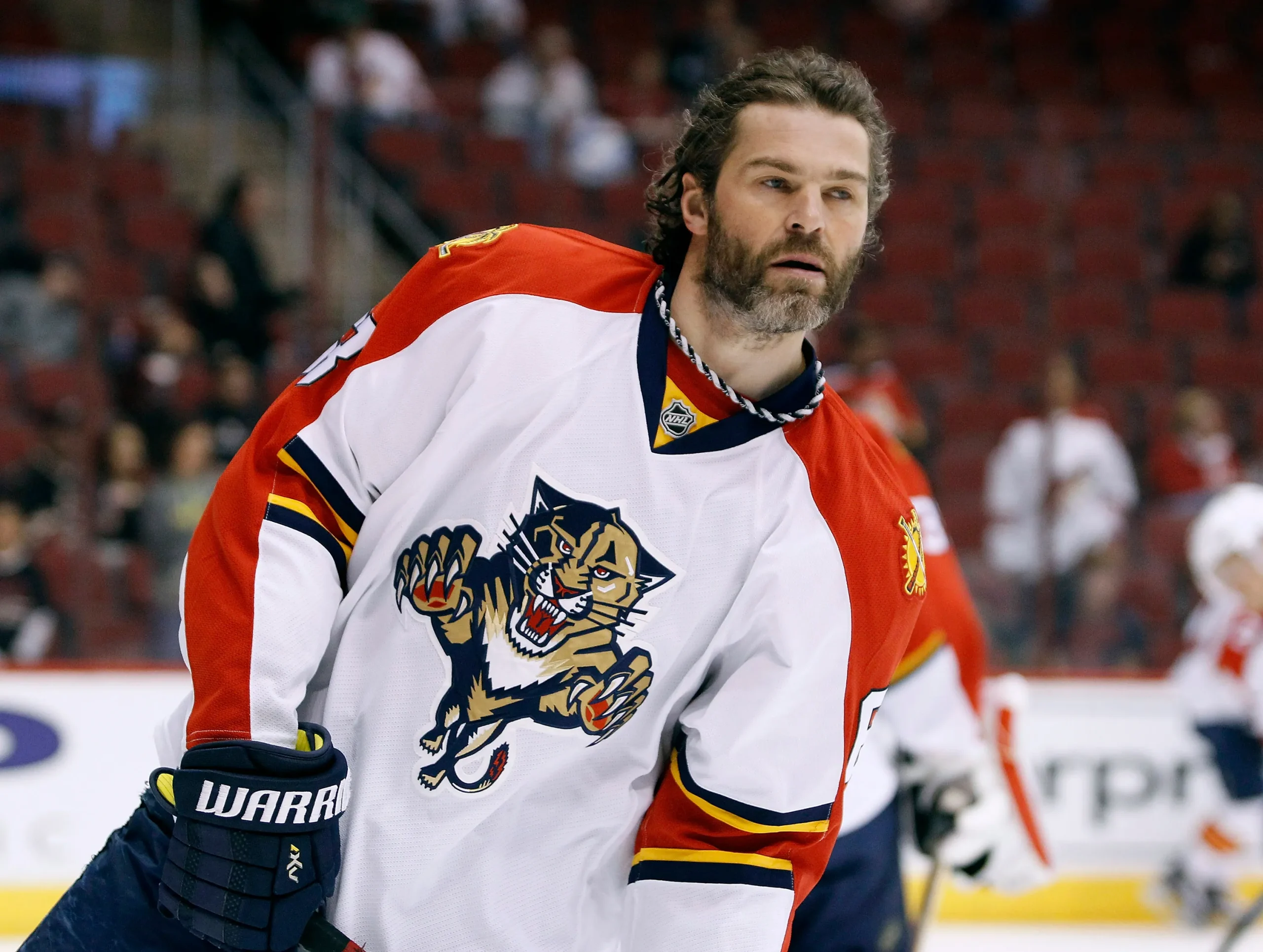
Jagr’s NHL accolades are numerous. He is second only to Wayne Gretzky in total points scored, making him one of the greatest offensive players in the history of the sport. Jagr has won the Art Ross Trophy as the NHL’s leading scorer five times and has been named to the NHL All-Star team on multiple occasions. His playing style combines skill, creativity, and an unmatched ability to maintain puck control, making him a nightmare for defenders.
Even in his 40s, Jagr continued to compete at a high level, adapting his game as necessary to remain effective against much younger opponents. His longevity is credited to his incredible passion for the game and his commitment to conditioning. Off the ice, Jagr is known for his quirky personality and love for the sport, often practicing late at night and during off-days.
Jagr’s longevity is also complemented by his adaptability; he has evolved his playing style to continue competing at a high level despite the physical challenges of aging. This adaptability is seen in his positioning, puck protection, and less reliance on speed over the years, focusing more on his strategic thinking and experience.
Jagr is not only a phenomenal player but also a cultural icon in the hockey world. His distinctive style, marked by his flowing mullet and charismatic personality, has made him a fan favorite across the NHL. Jagr’s influence extends back to his home country of the Czech Republic, where he has been a significant figure in promoting hockey and sports in general.
3. Joe Thornton
Joe Thornton, born on July 2, 1979, in London, Ontario, Canada, is one of the premier playmakers in NHL history. Drafted first overall by the Boston Bruins in 1997, Thornton has had a storied career with several teams, most notably the San Jose Sharks, where he played for over 15 years and served as captain.

Thornton’s strength lies in his exceptional passing and vision on the ice, making him one of the top assist providers in the league. Over his career, he has amassed over 1,000 assists, placing him among the elite in NHL history. Thornton won the Hart Memorial Trophy as the league’s most valuable player in 2006, following a trade to San Jose, where he immediately revitalized the team and led them to consecutive playoff appearances.
Known for his laid-back personality and leadership qualities, Thornton has been a mentor to many younger players, imparting his extensive knowledge and experience. Despite the physical demands of a long NHL career, Thornton has maintained his level of play through dedication to fitness and a deep love for hockey, continuing to contribute significantly well into his 40s.
Thornton’s career stats are staggering, with over 1,500 NHL games and numerous playoff appearances. His exceptional vision on the ice and his ability to make plays under pressure have set him apart as one of the best passers in hockey history.
Beyond the rink, Thornton’s gregarious nature and jovial personality make him a beloved figure in the locker room. He has been pivotal in fostering team camaraderie and maintaining morale. His commitment to the community through various philanthropic efforts reflects his role as a leader not just on his team but also in society.
4. Patrick Marleau
Patrick Marleau, born September 15, 1979, in Aneroid, Saskatchewan, Canada, is synonymous with durability and consistency in the NHL. Drafted second overall by the San Jose Sharks in 1997, Marleau has spent most of his career with the Sharks, becoming the face of the franchise and its all-time leader in points, goals, and games played.
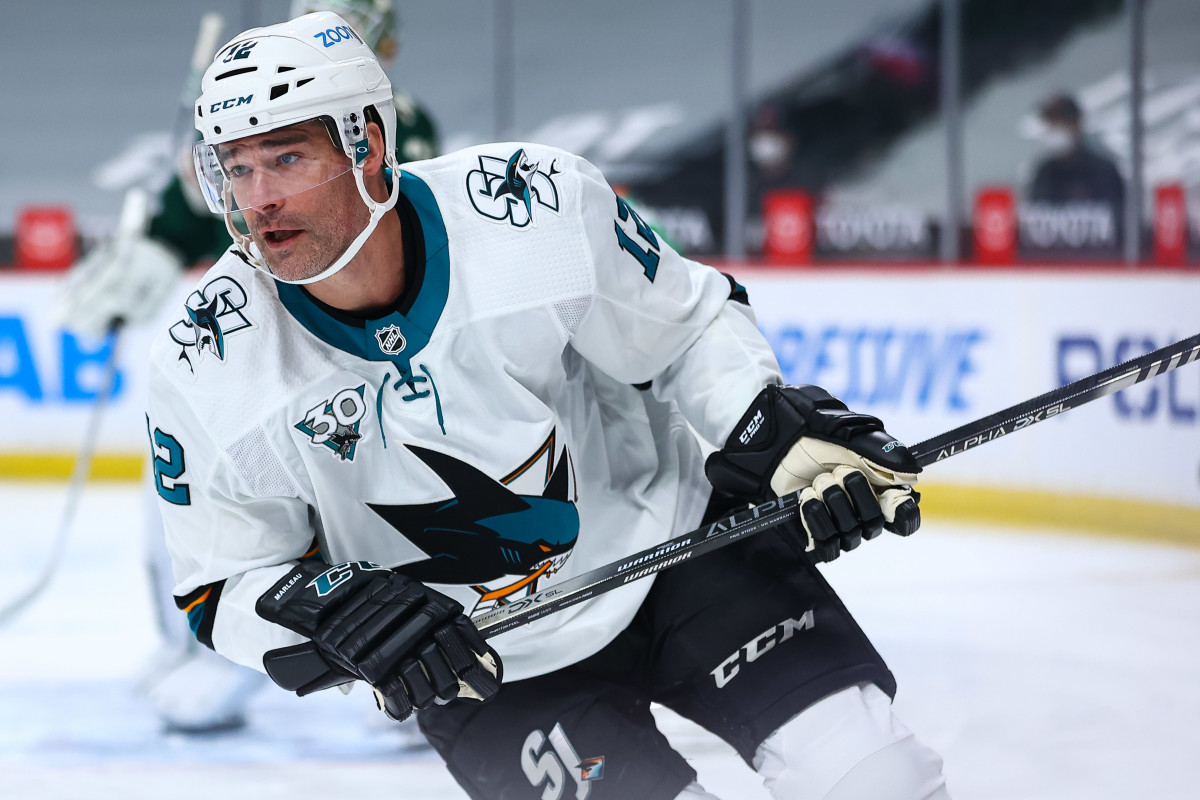
Marleau’s game is characterized by his speed and scoring ability. He is especially noted for his performance in clutch situations, including playoffs and critical matchups. In April 2021, Marleau broke Gordie Howe’s record for the most games played in NHL history, a testament to his longevity and durability.
Off the ice, Marleau is known for his quiet leadership and professionalism. His commitment to the sport and his physical preparedness have allowed him to compete effectively for over two decades in the league. Marleau’s legacy is not only defined by the records he has set but also by the respect he commands from teammates and opponents alike.
Marleau’s record for the most NHL games played is a testament to his exceptional fitness levels and dedication to the sport. His career longevity is also highlighted by his quick adaptation to different coaching styles and team strategies, which has made him a versatile and invaluable team player over the years.
Marleau’s consistency and durability are complemented by his quiet leadership. He may not be the most vocal leader, but his professionalism and work ethic set a standard for his teammates and young players around the league. His impact on the game is also felt through his involvement in youth programs, particularly in his hometown, where he inspires the next generation of hockey players.
5. Matt Cullen
Matt Cullen, born on November 2, 1976, in Virginia, Minnesota, USA, is known in the NHL for his versatility and leadership. Drafted by the Anaheim Ducks in 1996, Cullen’s NHL journey spanned over 21 seasons during which he played for several teams including the Carolina Hurricanes, Minnesota Wild, and Pittsburgh Penguins.
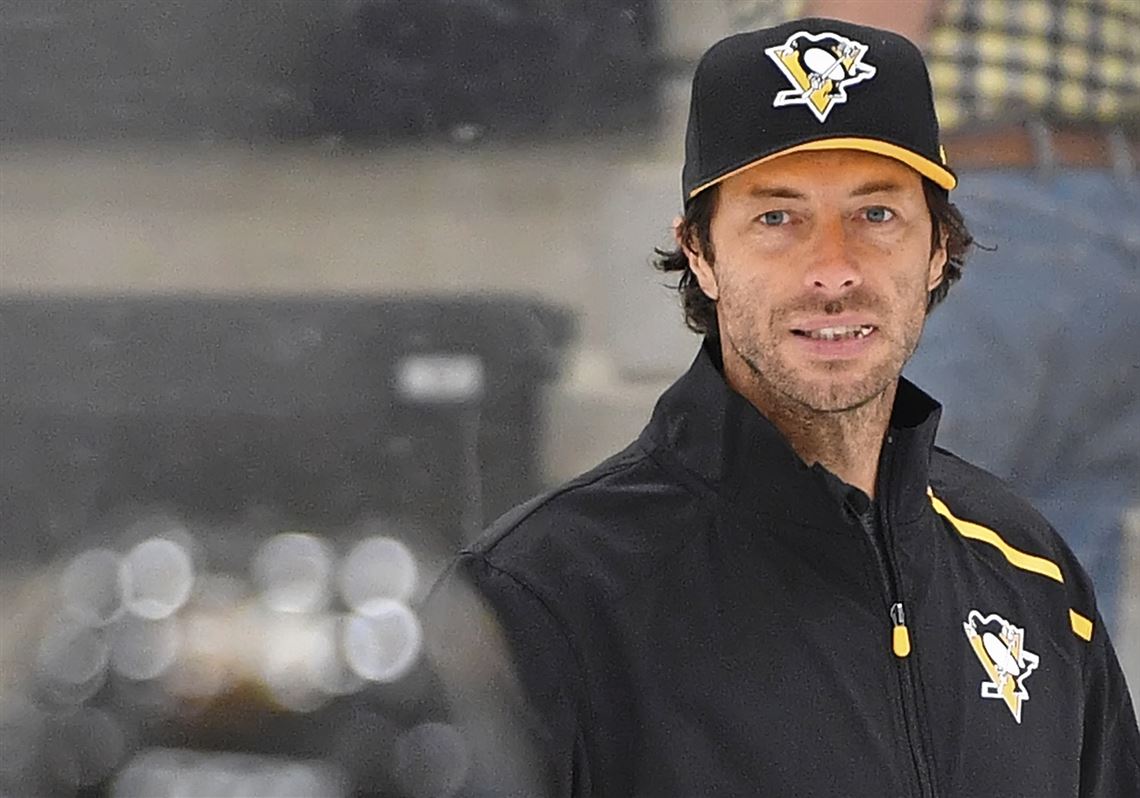
Cullen’s career highlights include winning three Stanley Cup championships, two with Pittsburgh (2016 and 2017) and one with Carolina (2006). His role on these teams was crucial, often serving as a third-line center who could be relied upon for important defensive faceoffs, penalty killing, and contributing key goals.
Known for his work ethic and professionalism, Cullen was a role model for younger players, embodying the values of dedication and sportsmanship. His ability to adapt to different team roles and situations helped him maintain a lengthy and successful NHL career. Off the ice, Cullen is actively involved in community service, contributing to various charitable causes through the Matt Cullen Foundation.
These players exemplify the remarkable diversity of age and experience in the NHL, showcasing how talent, dedication, and adaptability can extend a player’s career while contributing significantly to the sport.
Cullen’s ability to play multiple positions and his versatility in special teams play has made him a valuable asset throughout his career. His skill set includes effective penalty killing, clutch goal-scoring, and reliable faceoff wins, making him a coach’s go-to player in critical moments of the game.
Off the ice, Cullen is recognized for his family-oriented approach and his active participation in community service. His annual charity event, Cully’s Kids, is focused on children’s healthcare and education, showcasing his commitment to giving back to the community that supports him.
Youngest Players in the NHL
1. Connor Bedard
Connor Bedard, born on July 17, 2005, in North Vancouver, British Columbia, Canada, represents the latest generation of NHL talent, bringing an explosive mix of skill and youthful energy to the league. Bedard, a center, is notable for his exceptional playmaking abilities and scoring touch, which have drawn comparisons to some of the game’s greats even at his young age. As a standout player in the Western Hockey League (WHL), his anticipated entry into the NHL has been eagerly awaited, with scouts and analysts predicting a transformative career.

Bedard’s playing style is characterized by his high hockey IQ, quick release, and ability to read the game several moves ahead of many opponents. His leadership qualities, despite his youth, have been evident in his amateur career, where he often wore the captain’s “C” during international play for Team Canada in youth tournaments. His early career is marked by numerous records and accolades in junior hockey, setting the stage for what many believe will be a stellar NHL journey.
As Bedard transitions into the NHL, his potential impact draws comparisons with other generational talents who entered the league at a young age. His junior career, marked by extraordinary goal-scoring feats and a mature presence, suggests he could adapt quickly to the professional level.
Bedard’s preparation for the NHL includes working with renowned skating and skills coaches to fine-tune his game, ensuring that his transition is as smooth as possible. His ability to learn and adapt quickly will be crucial as he faces the physical and mental challenges of the NHL.
2. Shane Wright
Shane Wright, born on January 5, 2004, in Burlington, Ontario, Canada, has been a highly touted prospect in the NHL due to his exceptional skill set and maturity on the ice. Drafted as a top prospect, Wright’s game is built around his strong two-way play, elite hockey sense, and natural leadership. His junior career was distinguished by his scoring prowess and ability to perform under pressure, qualities that are expected to translate well into the NHL.

Wright’s impact is not limited to his offensive capabilities; his defensive play and commitment to team success are equally impressive. His intelligence in both zones allows him to anticipate plays and make smart decisions, a rare trait in players of his age. Off the ice, Wright is known for his work ethic and professionalism, traits that have earned him respect from coaches and peers alike.
Wright’s leadership skills were evident early in his career, as he was granted “Exceptional Status” to join the Ontario Hockey League a year early, a rare honor shared by only a few players. His balanced skill set allows him to contribute in all areas of the game, making him a two-way player with a high defensive acumen.
As Wright develops, his understanding of the NHL’s pace and space will be critical. He is also focusing on enhancing his physical strength and conditioning to meet the rigorous demands of professional hockey, indicating his commitment to not just playing in the NHL but excelling.
3. Matthew Savoie
Matthew Savoie, born on January 1, 2004, in St. Albert, Alberta, Canada, is another bright young talent in the NHL, known for his speed, agility, and offensive skills. As a dynamic forward, Savoie’s ability to maneuver through tight spaces and create scoring opportunities for himself and his teammates has made him a key prospect for NHL scouts. His play in the junior leagues showcased his potential as a top-line forward in the NHL.
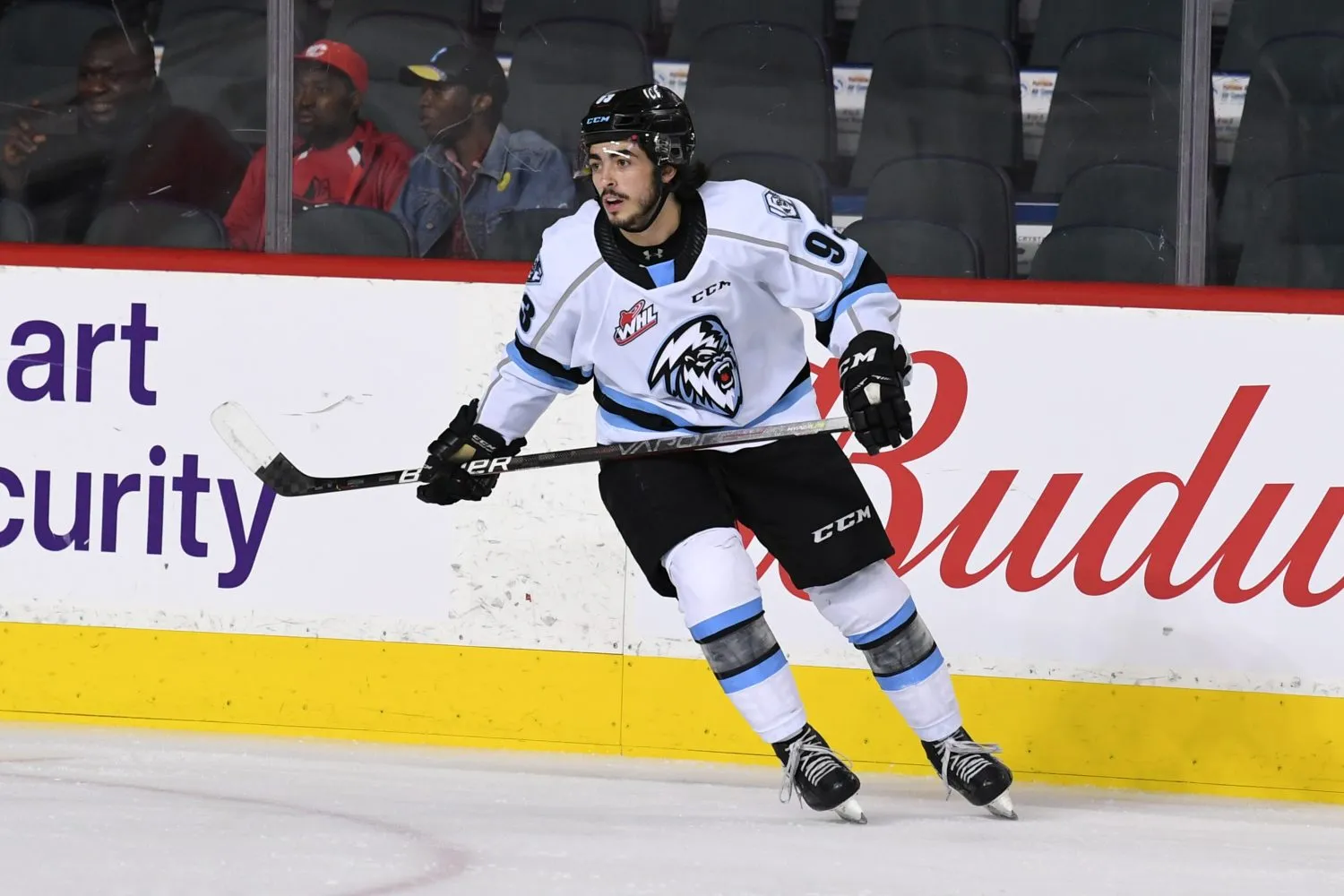
Savoie’s game is complemented by his excellent skating ability and hockey IQ, which enable him to be effective in various situations, including power plays and penalty kills. His dedication to improving his game is evident in his constant focus on refining his skills and physical condition, preparing him for the demands of professional hockey.
Savoie’s draft year highlighted his dynamic play and ability to make those around him better, traits that scouts believe will translate well at the NHL level. His dedication to improving his defensive game and physical strength is seen in his off-season training, where he focuses on building muscle and increasing his stamina.
His community involvement and leadership extend beyond the ice, as Savoie often participates in local events and youth hockey clinics, demonstrating his role as a young ambassador for the sport.
4. Brad Lambert
Brad Lambert, born on December 19, 2003, in Lahti, Finland, is known for his incredible skating skills and offensive capabilities. As a Finnish-Canadian, Lambert brings a blend of North American intensity and European finesse to his game, making him a versatile and dangerous forward. His international play has been particularly impressive, where he has often stood out at youth levels for Team Finland.

Lambert’s style of play includes a strong ability to read the ice and make quick decisions, a skill that makes him effective in high-pressure situations. His potential in the NHL is seen not just in his ability to score, but also in his capacity to adapt and thrive in different playing styles and systems. Off the ice, his bilingual and bicultural background provides him with a unique perspective on the game, enhancing his adaptability and understanding of different hockey cultures.
Lambert’s international experience at a young age has provided him with a unique perspective on the game, exposing him to high-level competition and diverse playing styles. His ability to adapt and thrive in different environments is a testament to his versatile playing style and hockey intelligence.
Lambert’s next steps involve refining his scoring touch and continuing to develop his physical game to handle the rigors of the NHL. His bilingual ability and cultural adaptability make him a valuable asset in a diverse locker room, fostering team unity and communication.
5. Juraj Slafkovsky
Juraj Slafkovsky, born on March 30, 2004, in Košice, Slovakia, has emerged as one of the top young talents in the NHL, known for his size, strength, and scoring ability. As a winger, Slafkovsky’s physical presence and puck control make him a formidable opponent. His performance in international competitions, particularly during the Winter Olympics, where he helped lead Slovakia to a historic finish, highlighted his potential and ability to play against highly skilled competition.

Slafkovsky combines his physical attributes with a keen sense of positioning and a sharp shooting ability, traits that promise to make him an impactful player in the NHL. His transition into the league is watched closely by many, as he adapts his robust European style to the faster-paced North American game. Off the ice, Slafkovsky is known for his calm demeanor and focus attributes that contribute to his reputation as a player poised for success in professional hockey.
Slafkovsky’s performance on the international stage, particularly at the Olympics, showcased his potential to perform under pressure against top-tier talent. His ability to use his size effectively, combined with his scoring ability, makes him a promising prospect for any NHL team.
As he prepares for the NHL, Slafkovsky is focused on enhancing his skating speed and agility, crucial for adapting to the North American style of play. His involvement in community and charitable activities in Slovakia highlights his commitment to using his platform to influence and inspire, aligning with his role as a future leader in the sport.
Conclusion
The profiles of the oldest and youngest players in the NHL offer a fascinating glimpse into the broad spectrum of talent and experience within the league. From seasoned veterans like Zdeno Chara and Jaromir Jagr to emerging stars such as Connor Bedard and Shane Wright, the NHL showcases an extraordinary range of players who bring unique skills and backgrounds to the ice.
Veteran players exemplify the power of experience, resilience, and adaptation. Their careers teach valuable lessons in longevity and leadership, underscoring the impact of seasoned professionals in shaping team dynamics and mentoring the next generation. These players have not only left indelible marks on the record books but also on the culture and spirit of the teams they have been part of.
On the flip side, the league’s youngest talents bring fresh energy, innovative playstyles, and a new perspective on the game that can invigorate teams and excite fans. Their rapid development and early impacts highlight the evolving nature of hockey, where youth and speed are increasingly pivotal. These young stars are set to carry the legacy of the NHL forward, promising an exciting future for the sport.
Together, the oldest and youngest players in the NHL stitch a continuous narrative of growth, excellence, and the timeless appeal of hockey. They remind us that the sport is not just about individual achievement but about the community, mentorship, and the passing of the torch from one generation to the next. This dynamic interplay between the experienced and the new is what keeps the NHL vibrant, competitive, and deeply engaging for fans around the world.









